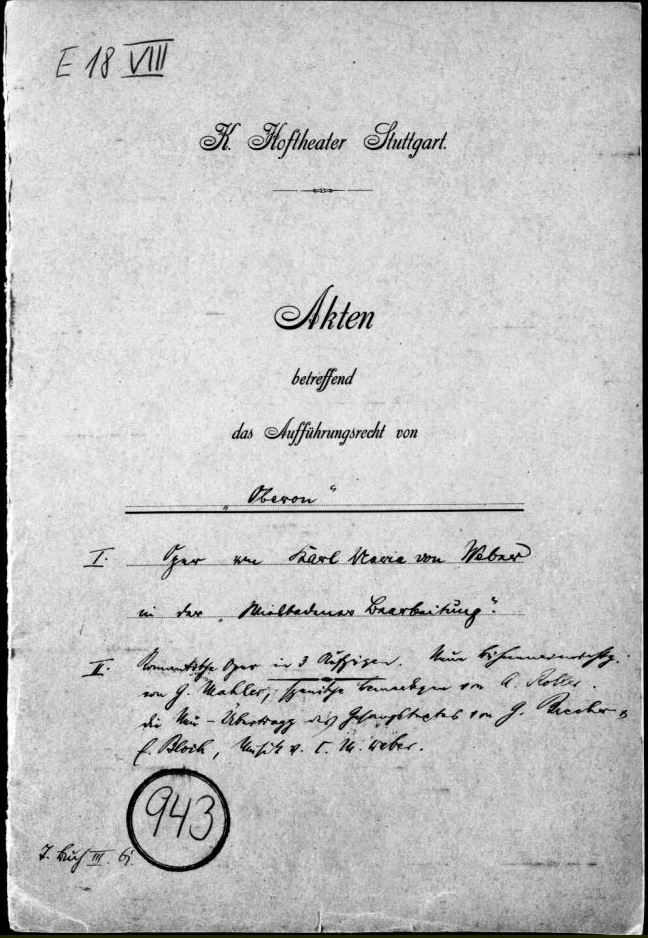Johan Sebastian Bach (1685-1750)
- Suite for orchestra (Bach-Mahler)
- Cantata No. 19 (Continuo Part/Vocal Score).
- Cantata No. 65 (Continuo Part/Vocal Score).
- Cantata No. 78 (Continuo Part/Vocal Score).
- Suite in B minor.
- Suite uit zijn orkestwerken 1909. Tevens her instrumentatie.
Ludwig van Beethoven (1770-1827)
- Quartet No. 11, in F minor, op. 95. Arranged for string orchestra by Gustav Mahler.
- Symphonies Nos. 1 t/m 9.
- Overtures (7):
- Coriolan.
- Egmont.
- Die Weihe des Hauses.
- Konig Stephan.
- Leonora No. 2.
- Leonora No. 3.
- Namensfeier.
- Piano Concerto No. 5, score.
- Symphony No. 3.
- Symphony No 3: (1878) Bewerking voor piano-vierhandig, in samenwerking met Rudolf Krzyzanowski tot stand gekomen.De première van en onder leiding van Bruckner zelf in 1877 was een fiasco. Nog tijdens de muziek verliet vrijwel het gehele publiek de zaal, evenals enige musici. Gustav Mahler was één van de weinigen, die de Symphony wel mooi vonden. Hij maakte ook een pianotransciptie bewerking. Als dank kreeg Mahler de eerste drie delen van de handgeschreven autograaf. De verrommelde derde versie bezorgde Bruckner eindelijk succes vanaf 1890. In moderne uitvoeringen is de 2e versie uit 1877 favoriet. Een autograaf is een handschrift dat een schrijver zelf heeft geschreven, in tegenstelling tot een afschrift of een tekst die door een secretaris of kopiist is genoteerd (een apograaf). In het Engels staat de term autograph specifiek voor een handtekening. Ongeveer in 1880.
- Symphony No. 4.
- Symphony No. 5.
- Scherzo capriccioso, op. 68.
George Enescu (1881-1955)
- Suite d’orchestre, op. 9.
- Mazeppa.
Charles Martin Loeffler (1861-1935)
- La Villanelle du diable, op. 9.
Wolfgang Amadeus Mozart (1756-1791)
- Symphonies Nos. 40.
- Symphonie no 41.
- Idomeneo Ballet.
- Opera: Le nozze di Figaro (with new accompanied recitative for the trial scene); publ. Peters, 1906.
- Christelflein Overture, op. 20.
- Kathchen von Heilbronn Overture, op. 17.
- Quartet No. 14, in D minor, ‘Der Tod und das Mädchen’. Arranged for string orchestra by Gustav Mahler.
- Symphony No. 8 (Unfinished).
- Symphony No. 9, in C major.
Quartet No. 14, in D minor, ‘Der Tod und das Mädchen’. Arranged for string orchestra by Gustav Mahler.
- Symphony No. 1.
- Symphony No. 2.
- Symphony No. 3.
- Symphony No. 4.
- Overture to Manfred.
- Overture to the Bartered Bride.
- Prelude to Die Meistersinger.
- Die Meistersinger, Prelude to Act III.
- Eine Faust Overture.
Carl Maria von Weber (1786-1826)
- Overture to Oberon Uitvoeringsversie. Carl Maria von Weber. Oberon, or The Elf King’s Oath is a 3-act romantic opera in English with spoken dialogue and music by Carl Maria von Weber. The libretto by James Robinson Planche was based on a German poem, Oberon, by Christoph Martin Wieland, which itself was based on the epic romance Huon de Bordeaux, a French medieval tale. Weber was dissatisfied by the structure of the opera as it was produced in London, and intended to revise the work on his return to Germany, but died in London before starting work on the revision. Since then, other composers and librettists have revised the work. Gustav Mahler: preparing a new performing version, rearranged some of the numbers and composed some linking music based on material from the existing score.
- Opera: Euryanthe (libretto publ. Künast, 1904?).
- Opera: Oberon ‘Neue Buhneneinrichtung’ (added ‘melodramas’).

Transcription Carl Maria von Weber (1786-1826)‘s Oberon by Gustav Mahler (1860-1911).
